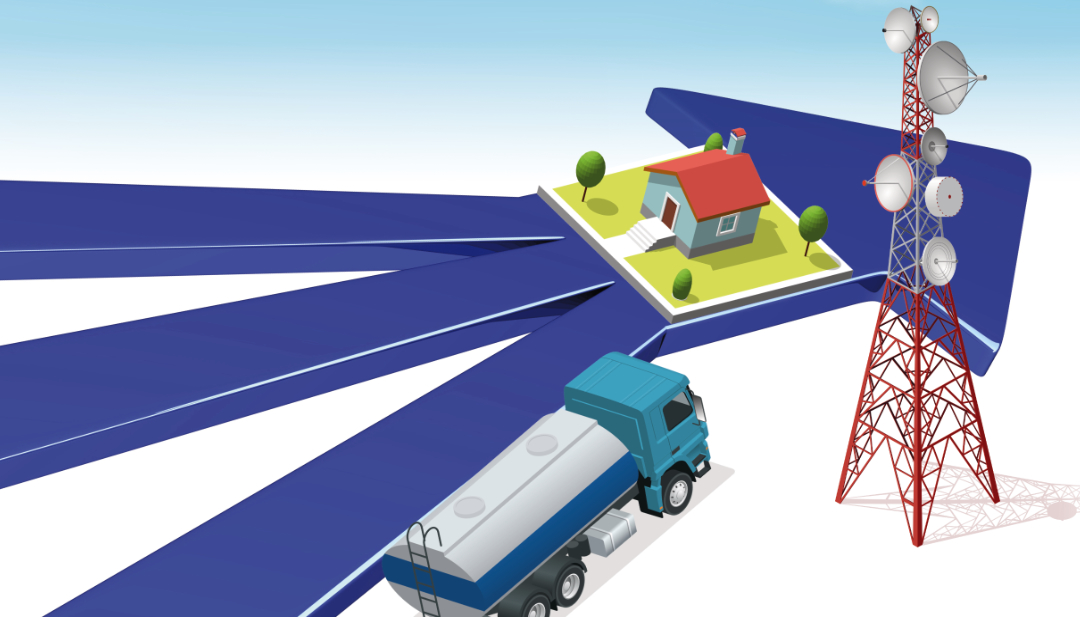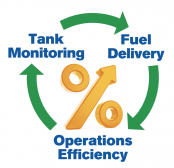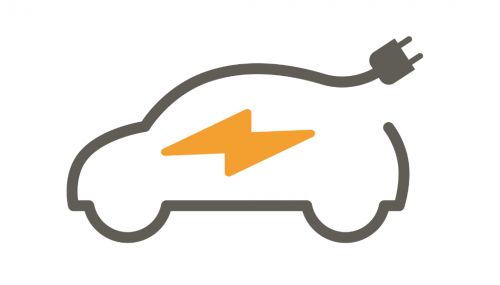All
The Intersectionality of Efficiencies
by Rhonda Gerson, Oil & Energy Magazine

Where tank monitoring, fuel delivery and operational efficiency meet.

Hans, Luke, and Leia. The Beastie Boys. The Three Musketeers. All for one and one for all. Add one more classic trio: fuel delivery, tank monitoring, and operational efficiency.
While you can have one without the others, all the trios work best when working in harmony. This is as true for liquid fuel retailers as it is for music and movies. Operational efficiency is a matter of “working smarter” and getting the best financial return on investments and operations. One of the best ways for fuel retailers to “work smarter” is to deliver more fuel in fewer drops, which is possible when tank monitors are used intelligently, which then leads to new billing opportunities as well as higher profits. The trifecta is complete.
“As a former bulk truck driver there is nothing more frustrating than pulling that delivery hose out 150 feet only to find the tank is 60 percent full and you really didn’t need to make that delivery. Nothing was more stressful during the peak delivery season as being on call for the week and wondering how many times you’re going to have to go out after hours. That stress is eliminated with large-scale deployments of monitors,” Mike Vigliotti, Telemetry Sales at Bergquist, recalled.
Capacitive Probe Tank Monitors: Better, Stronger, Faster
Like most everything else in the world, the technology around storage tanks and fuel deliveries has undergone rapid transformation after generations of stasis. Fuel delivery scheduling had not changed much in the first hundred years or so of the industry. The trucks went out and dropped fuel to everyone on the route that day, or customers called for a delivery. Heating degree day/K-factor calculations added more accuracy, but could still result in short drops if the customer had been away from home, or runouts (or near-runouts) during cold snaps or changes in the family structure.
About a decade ago, the first remote tank monitors came onto the market and promised an end to all that, but the cost, installation requirements, and poor Wi-Fi transmissions from basement tanks made them less than ideal for heating oil tanks. There were many benefits to the tank monitors, especially for properties with inconsistent usage. The monitors took a lot of guess work out, sending readings to the office and alerting dispatch when the tank hit a predetermined level for the delivery to be scheduled.
“The impact of remote tank monitors can range anywhere from ‘the most profitable investment’ to ‘an absolute waste of money.’ It fully depends upon why you want them, what you will do with them, and whether your entire team is on board with – and willing to execute – the plan. Monitors do NOT make deliveries larger all by themselves. Once installed and maintained properly, they should give you accurate In-tank Levels (ITL’s) that allow you to make delivery decisions,” according to Phil Baratz, CEO of Angus Energy.
Tank monitors with capacitive probes from Otodata are changing the discussion. These Bluetooth probes are easily installed in the oil or propane storage tank, and the cellular monitor is attached to the outside of the tank or at the fill nozzle.
“The split unit offers so much more. First, there are no moving parts to break. And with basement tanks, not only do you have better communication, if the customer leaves for any reason, the retailer can remove the monitor without needed access to the tank itself. Our capacitive probe monitors also work with our digital platform, offering all the benefits of our other monitors and more,” explains André Boulay, President of Otodata Tank Monitors.
According to Boulay, the capacitive probe monitors are very affordable, making them more attractive to retailers and consumers. “We anticipate the lower cost will accelerate installations. Our customers are more interested in these items – we’re seeing better penetration rates thanks to the lower cost of deployment and the ease of installation.”
For propane, Boulay says one of the bigger issues was always the wire that attached the monitor to the tank gauge. Wires get cut, disconnected, eaten by squirrels and rodents, or the connection gets dirty. These would suddenly stop working and require a trip out to the unit for maintenance. The wire-free capacitive probe monitors have no wires and transmit the readings to the cloud. Even more exciting is that Otodata is working directly with tank manufacturers who are developing newer model tanks that will include capacitive probe technology. Once these are on the market, the Otodata monitor will work wirelessly with the tank, making installation and use even easier and more cost effective. “I’m pretty excited about this, because the wires are half the problem! This is going to be great,” Boulay adds.
Another benefit is that the monitors can receive data from multiple tanks on the property. Accounts that require on-road diesel, off-road diesel, gasoline, and lubricants can install the capacitive probes in each tank and have their levels tracked by the single monitor.
Smart Meters: Monitoring on Steroids
About ten years ago, the European Union mandated new accuracy standards for gas meters, moving from 100-year-old diaphragm meter technology to smart ultrasonic meters. The new meters are more accurate to smaller units of gas, have no moving parts and thus do not need to be recalibrated on a regular basis, and communicate levels and usage directly to the vendor.
Cavagna initially joined the rush of manufacturers creating smart meters for natural gas, but soon realized a wide-open market for propane meters in the United States.
Where monitors account for the amount of fuel in a tank, smart meters track propane or other gas that passes through the monitor into the home.
“The meter we brought in, it’s really cool. It’s a tank monitor on steroids. It does everything a tank monitor does, measuring the gas in the tank. But instead of measuring what’s left, you’re measuring the propane that leaves the tank,” explains Peter Dwyer, VP Sales and Business Development, LPG Division, for Cavagna North America.
Vigliotti adds that the meters work on the same concept of tank monitors, with a cellular unit that reports the current reading and usage. The retailer has access to daily customer usage through the system portal, which includes an invoice function to make monthly billing easier.
The data can also be integrated with most backend management software, and web developers should be able to pull the information through to the retailers’ online customer self-service portals.
“Miles to empty is a good comparison of the way we measure what’s in the tank. If you put 400 gallons in the tank and you can measure how much is leaving it and how quickly, you know when it will need to be filled. It’s a much more accurate form of tank measuring,” Dwyer adds. Furthermore, he adds, that while there is a cost to the vendor to purchase and install the meters, a low monthly metering fee can recoup that cost in less than 18 months and then become additional revenue.
A New Billing Metric
Heating oil and propane are virtually the only utilities that bill on a per-delivery basis. A heating oil customer receiving 175 gallons at more than $4 per may struggle to pay the $700 within the 30-day window. Their account goes into arrears. The dealer loses vital cash flow as well as the time and cost of dunning and collections. The customer runs out of fuel, cannot get a refill, and then posts a rant on Facebook about the big, bad fuel company that left the family in the cold, shattering the company reputation.
Budget plans could ease some of these issues, but few customers enroll. According to the 2023 Gray, Gray & Gray National Energy Survey, 56 percent of dealers have fewer than 20 percent of their customers on a budget plan and 30 percent of dealers enroll 21-to-40 percent of their customers. Eighty-six percent of fuel companies have fewer than 40 percent of their customer base on a budget plan. No companies reported having more than 60 percent.
Integrated tank monitors and smart meters open up the opportunity to bill customers based on their usage, the same way they pay for their natural gas, electric and water service.
“When the propane company fills the tank, typically the customer gets a huge bill for the fill up. For instance, in January, they get a delivery of 300 gallons. Typically, they’re paying for that upfront. With a smart meter, they will only be billed for what they had used, say 200 gallons. For the end user, consumer consumption-based billing gives them more of a familiar interface that perhaps they have been used to with natural gas billing in the past. It makes it much easier for the consumer to budget their monthly expenses,” Vigliotti says.
Rethinking Deliveries
With more accurate, daily data from newer model tank monitors and smart meters and the opportunity to convert to usage-based billing, liquid fuel providers can reconsider their delivery schedules.
Retailers can move from HDD-based demand deliveries to strategic delivery based on real usage data, filling slower-use tanks “early” to have the supply and staff to manage high demand periods.
“Delivery plans can include any of the following: making the largest deliveries you can, scheduling to avoid runouts, and avoiding small deliveries that are part of ‘linked tanks.’ Delivery plans can also be part of a broader methodology that leads to optimized fleet use, efficient driver distribution and avoiding overtime. As an example, a monitored tank might lead you to making a “smaller” delivery to a slow burning tank in November, with the idea to (a) make the next delivery in late February – avoiding a delivery during the peak month of January – while (b) assuring yourself that if the consumption is higher than anticipated, you will still avoid a runout,” Baratz says.
The new technology opens up additional storage, especially for the propane industry where the retailer owns the tank and the product inside, or fuel dealers with customers on budget plans or a usage-based billing cycle.
In the July, 2023, issue of Oil & Energy, Joe Montroy, Vice President, Sales, for Bergquist, explained, “Every sixty 500-gallon tanks are the combined capacity of another 30,000-gallon storage tank in your yard. Fill them up in the off season when you have more time. Know that you are going into the heating season with customer tanks topped off.”
Operational Efficiencies on The Road
If the art of operational efficiency is to find greater profit in company procedures, then tank monitoring and metering, refined delivery tactics, and per-use billing are a liquid fuel company manager’s secret weapon.
One of the clearest benefits is the ability to manage fuel costs. With usage-based billing, the customer no longer complains about late summer fills, because they do not have to pay for the fuel until it is used. The gallons being delivered were purchased at lower off-season rates. However, the customer will be invoiced at more expensive winter rates when the fuel is consumed, immediately increasing the company’s margin.
Topping off tanks before the season also reduces the number of deliveries during peak periods, saving the company even more. “Today we see most marketers with an average cost per delivery of somewhere between $70-$100 per drop. We have seen marketers that have been able to save several thousand deliveries from taking place every year, which translates to a huge savings to their bottom line. We have seen many cases where overtime has been virtually eliminated, and companies that had drivers retire, but because their delivery efficiency is so much better, they have not had to replace those drivers,” Vigliotti adds.
The analytics from the monitors can also identify inefficient deliveries and help determine the reasons behind them. Knowing how much fuel is in the tank should put an end to short drops, but sometimes drivers route themselves and deliver to nearby properties, or dispatchers pull a ticket early. There is always the opportunity for human error and the opportunity to correct it. Other times, however, there is good reason for a short drop, such as in preparation for an approaching winter storm or to get rid of overages of pre-buy gallons.
Operational Efficiencies in The Cloud
The data returned to the office is much more than tank levels and delivery alerts. The software for these monitors offers company management deep insight to operations and costs, and service options have been expanded.
“The objective is, you’re deploying all these monitors, you should know what needs to be done to make sure they’re all giving you the best returns on investment. We provide that very precise information,” Boulay says.
Otodata’s online portal and Nee-Vo app offer “cool KPIs – technical KPI performance of your deliveries, which markets are doing well, which routes are good and which can improve. The business intelligence installed in the software is designed for the customer to improve delivery logistics,” he explains.
The software offers a side dashboard for finance managers and upper management to see a full financial overview: the company’s investment in hardware and monthly expenses as well as the monthly income from the monitors. It also provides estimates on company savings based on drop sizes, optimal sales, and other parameters specific to the retailer, to provide an accurate indication on their return on investment.
One of the new features Boulay is most excited about is the expanded Service Center. “When you have thousands of monitors deployed, there’s always maintenance. You need to know where they are, if they’re being used. It can be hard to keep track. But our new feature is focused on assisting our customers post-purchase with inventory, location, and troubleshooting. The monitors send an alert if something goes wrong at the site and needs repair. With the new platform, our customer doesn’t have to send someone out to see if it’s a coverage problem, a bad dial, or something else. Our system diagnoses the issue and provides a clear action plan, so they know what to do before they deploy a technician,” he adds.
“The list of potential benefits of tank monitoring goes on and on, but must start with the conversation relating to what you are trying to accomplish. Or, better put, what keeps you awake at night,” Baratz concludes.
Is the industry ready for this upheaval? It would require widespread installation of tank monitors and smart meters, and a complete overhaul of billing practices that have “always been done this way.” On the other hand, the “old way” is a reason behind one of the industry’s largest drawbacks, the big bills that get dropped on consumers with every fuel drop. Perhaps a move to a more familiar and equitable process would be more attractive to the customer. It would certainly be a way for the ambitious fuel dealer to separate themselves from the pack.
Our thanks to the industry leaders who participated in this article. For more information about the products and services described above, visit: Angus Energy at www.angusenergy.com; Bergquist at www.bergquistinc.com; Otodata Tank Monitors at www.otodata.com; and Cavagna North America at www.cavagnana.com.
Related Posts
 U.S. Competing to Secure Critical Minerals
U.S. Competing to Secure Critical Minerals
Posted on June 16, 2025
 The Clean Air Act, the EPA, and State Regulations
The Clean Air Act, the EPA, and State Regulations
Posted on May 14, 2025
 Day Tanks Support Back-up Generators in Extreme Conditions
Day Tanks Support Back-up Generators in Extreme Conditions
Posted on March 10, 2025
 Major Breakthrough in Lithium-Ion Batteries
Major Breakthrough in Lithium-Ion Batteries
Posted on February 12, 2025
Enter your email to receive important news and article updates.
